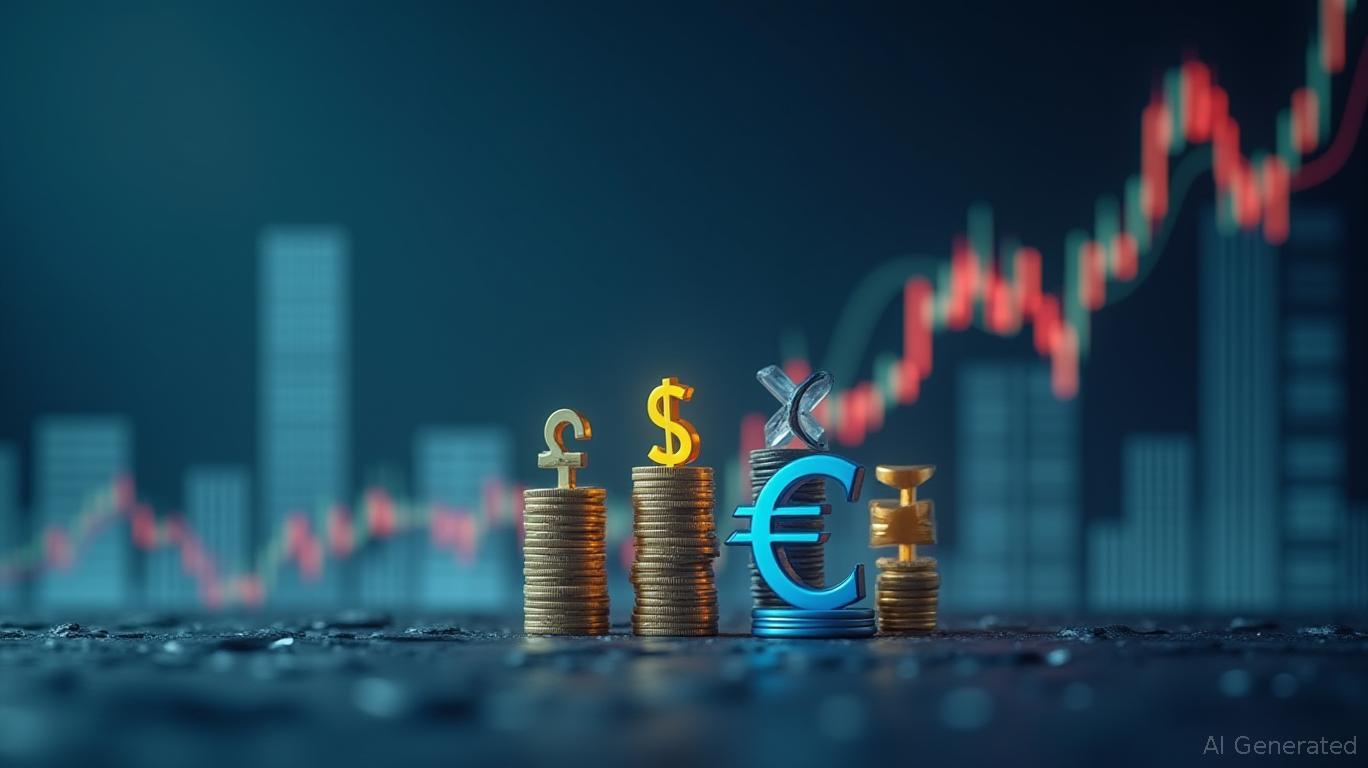The Dollar's Vulnerability Amid Escalating Trade Wars and Fiscal Concerns
The U.S. dollar, long the bedrock of global finance, is facing unprecedented headwinds as trade wars intensify and fiscal discipline erodes. Aggressive tariff policies, mounting deficits, and capital flight are reshaping the investment landscape, creating a compelling case to reduce USD exposure. Meanwhile, the euro and commodity-linked currencies stand to benefit from this turmoil. Here's why now is the time to pivot.

The Perfect Storm for the USD
The Trump administration's “Reciprocal Tariff Policy,” launched in April 2025, has triggered a cascade of economic and geopolitical risks. By imposing a 10% minimum tariff on all imports and escalating rates up to 145% for China, the U.S. has ignited a global trade war. The immediate result? A 2.3% spike in consumer prices, equivalent to a $3,800 average annual loss in purchasing power per household, with lower-income families hit hardest.
But the true vulnerability lies in the structural flaws exposed by these policies. The U.S. trade deficit now stands at 4.2% of GDP, a level unsustainable without continued capital inflows. Compounding this, the fiscal deficit is soaring as tariff revenue ($3.1 trillion by 2035) fails to offset the drag on GDP—a 0.6% permanent contraction by 2026.
Capital Flight and the Sell America Thesis
Investors are voting with their wallets. Portfolio rebalancing post-April's tariff announcements led to a 1-2% depreciation of the USD against G10 currencies, with the euro and yen surging. This isn't just short-term volatility—it's a strategic reallocation.
- Equity markets: The S&P 500 underperformed European indices by 5% in Q2 2025, driven by fears of stagflation and supply chain disruptions.
- Bond markets: The Fed's delayed rate cuts (projected to remain at 4.50% until late 2025) contrast starkly with the ECB's aggressive easing.
The “Sell America” thesis is gaining traction. Why hold USD assets when trade wars threaten earnings and fiscal recklessness undermines the currency?
ECB Rate Cuts: A Tailwind for the Euro
The ECB's June 2025 rate cut to 2.00%—with further reductions to 1.75% by year-end—creates a compelling opportunity. The widening interest rate spread between the U.S. (4.50%) and Europe (1.75%) fuels carry trade demand for the euro.
Technical analysis confirms the euro's upside:
- Key resistance: 1.1425 and 1.1500.
- Support levels: 1.1300 (immediate), 1.1220 (critical).
A break above 1.1500 could trigger a rally toward 1.1800, fueled by reduced U.S. growth and
liquidity.Safe Havens in a Volatile World
For those seeking stability beyond the euro, commodity-linked currencies and safe-haven alternatives offer refuge:
1. Japanese yen (JPY): The yen's inverse correlation to risk assets makes it a hedge against trade-war uncertainty.
2. Swiss franc (CHF): Switzerland's neutral stance and low inflation (0.8%) bolster its appeal.
3. Canadian dollar (CAD): Tethered to oil prices, CAD benefits from geopolitical tensions boosting energy demand.
Act Now: Reduce USD Exposure
The writing is on the wall. The U.S. dollar's reign as the dominant reserve currency is waning, and investors must adapt:
- Sell USD-denominated bonds: Rising inflation and fiscal deficits will erode returns.
- Buy EUR/USD: Target 1.1500 with a stop below 1.1220.
- Hedge with yen or franc: Allocate 10-15% of portfolios to safe havens.
The era of “strong dollar” complacency is over. Trade wars, fiscal mismanagement, and capital flight have created a once-in-a-generation opportunity to rebalance portfolios. The time to act is now—before the USD's decline accelerates.


Comments
No comments yet